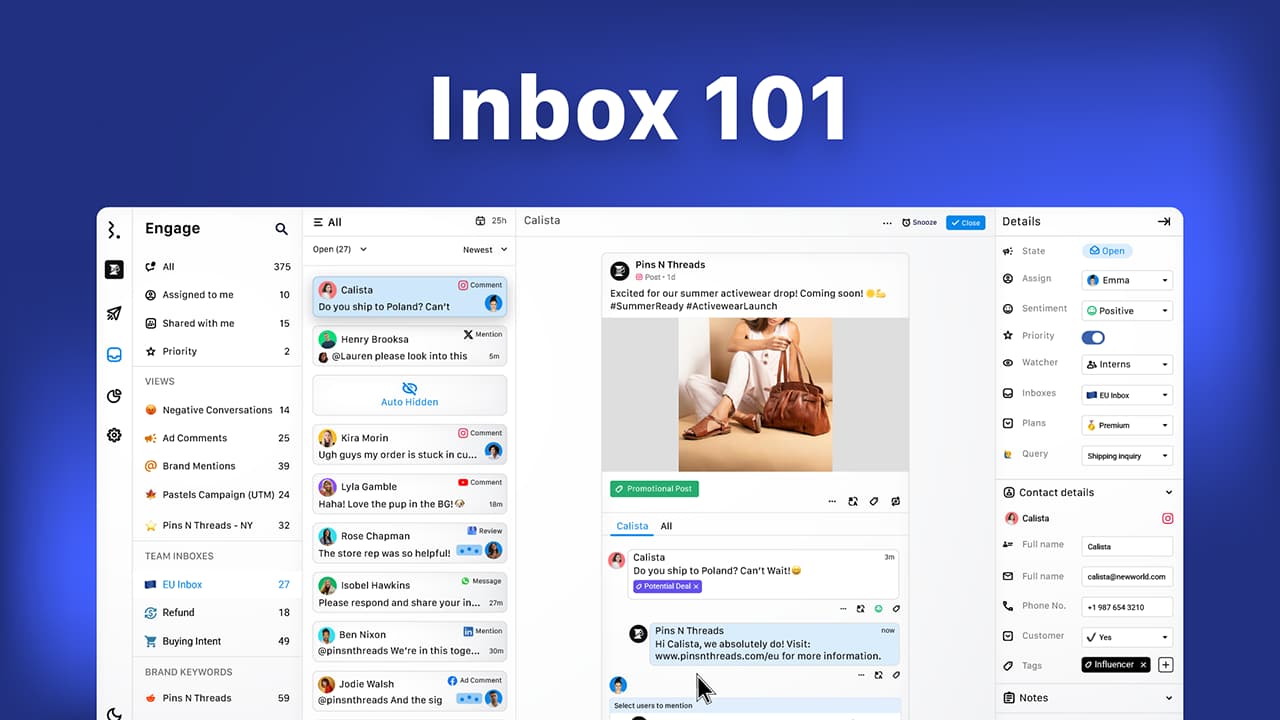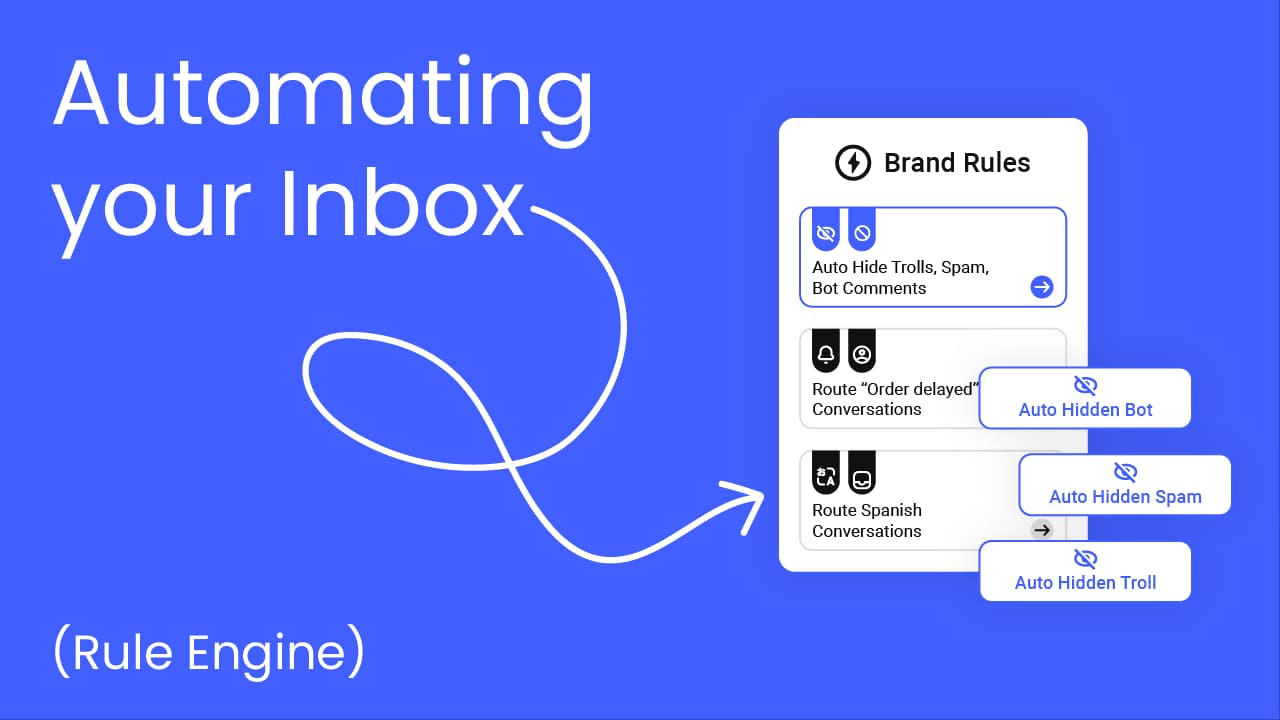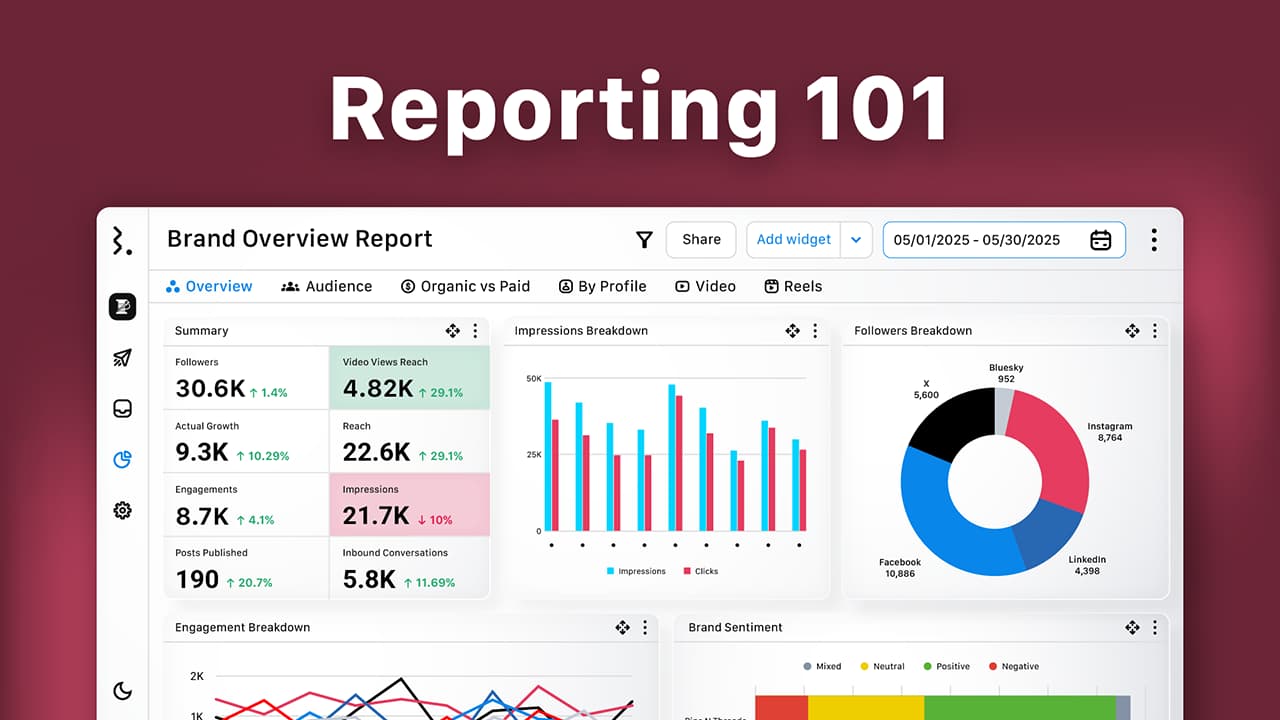Even with billions of social media users worldwide, it’s no longer enough for a brand to publish content and hope the right people will find and engage with their posts.
Understanding how to initiate a conversation with your target audience and keep them engaged relies on more than just posting content.
Even if your team is posting consistently and has a social media strategy in place, there’s another very important piece of a successful social media presence, which is community management.
When done right, community management can
Enhance your brand’s visibility
Create a meaningful rapport with your audience,
Help you collect consumer insights,
And keep your consumers happy.
However, building and sustaining such communities is labor-intensive.
It requires careful planning, consistent execution, and the right tools.
Throughout this blog, I will walk you through
What social media community management is,
How to manage it on a day-to-day basis,
And tools to help you better manage your community.
What is Social Media Community Management & Why is it Important?
Social media community management is the process of creating and maintaining online spaces where people can interact with your brand and with one another.
It includes more than posting content or replying to comments. You must create an environment where your audience feels welcome, supported, and connected.
Instead of treating followers like a number or a sales target, community management focuses on having real conversations, building relationships, and shared experiences.
This can happen in public spaces like Instagram or X (Twitter), or in private spaces like Facebook Groups or Discord servers.
But why does this matter?
Because people want to feel heard, they want brands to understand their needs, care about their feedback, and be willing to have real conversations, not just push ads or announcements.
How to Set the Foundation for Social Media Community Management?
Before you start managing a community, you need to set a solid foundation. Skipping this stage will lead to communities that fail to grow or stay active.
Below are the key elements that must be in place before day-to-day community management begins.
Clarify your community’s purpose and goals
Start by deciding why you're building a community in the first place.
Some communities are meant to support customers, others aim to build brand loyalty, test product ideas, or create space for peer-to-peer interaction.
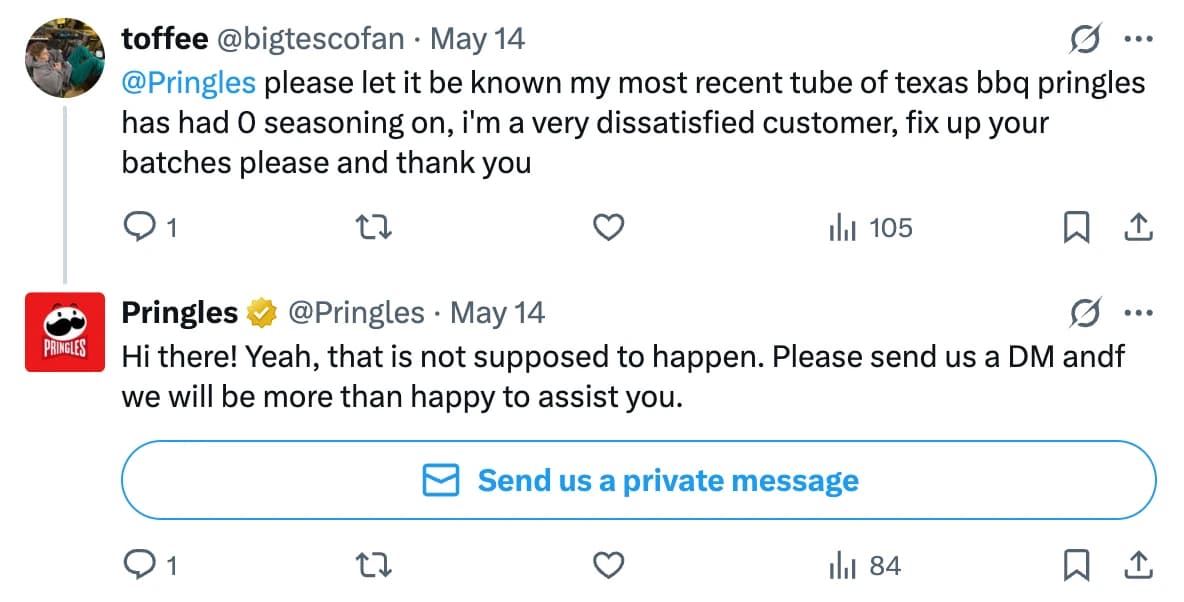
Be clear whether your focus is on engagement, retention, support, feedback, or advocacy.
Once the purpose is defined, set concrete goals.
These could include metrics like increasing engagement rate, reducing response time, or growing a private group to a specific number of active members.
Choose the right platform(s)
Pick platforms based on where your audience already spends time.
Instagram is good for visual interaction, X (Twitter) works well for real-time conversations, while LinkedIn is better for professional discussions.
For more structured or long-form interactions, consider Facebook Groups, Reddit communities, or Discord servers.
The right platform also depends on your goals. If you're aiming to provide fast support, Twitter or Facebook are the best options.
If you're trying to build long-term loyalty, a private group or forum may be more suitable.
Assign a community manager/moderator role
A community cannot function without consistent human oversight.
Assign a community manager or moderator(s) who will be responsible for guiding conversations, resolving disputes, responding to members, and ensuring that rules are upheld.
They must understand the community’s goals, know how to apply brand voice across channels, and handle both positive and negative engagement calmly.
They should also act as a point of contact between internal teams and the community to flag common feedback or emerging issues.
How to Manage & Engage Your Social Media Community Day-to-Day?
In this section, we’ll cover practical ways to manage and engage your community day-to-day.
Watch Out for Spam, Conflict, and Bad Behavior
On social media, not all engagement is good.
Spam, trolling, and inappropriate behavior can make others feel uncomfortable and damage your community's vibe.

Example of Spam Comments
So, stay alert for content that doesn’t belong in your community, like random ads, fake giveaways, or links to unrelated websites.
Equally important is how you handle rude or hurtful comments.
The community manager should intervene promptly when someone is using offensive language, engaging in fights, or making others feel unsafe.
The goal isn’t to silence disagreement, it’s to keep it respectful.
If you're managing a high volume of comments, comment moderation tools like Statusbrew will make your job easier.
It lets you automatically hide spammy, offensive, or off-brand replies without needing to monitor every post manually.
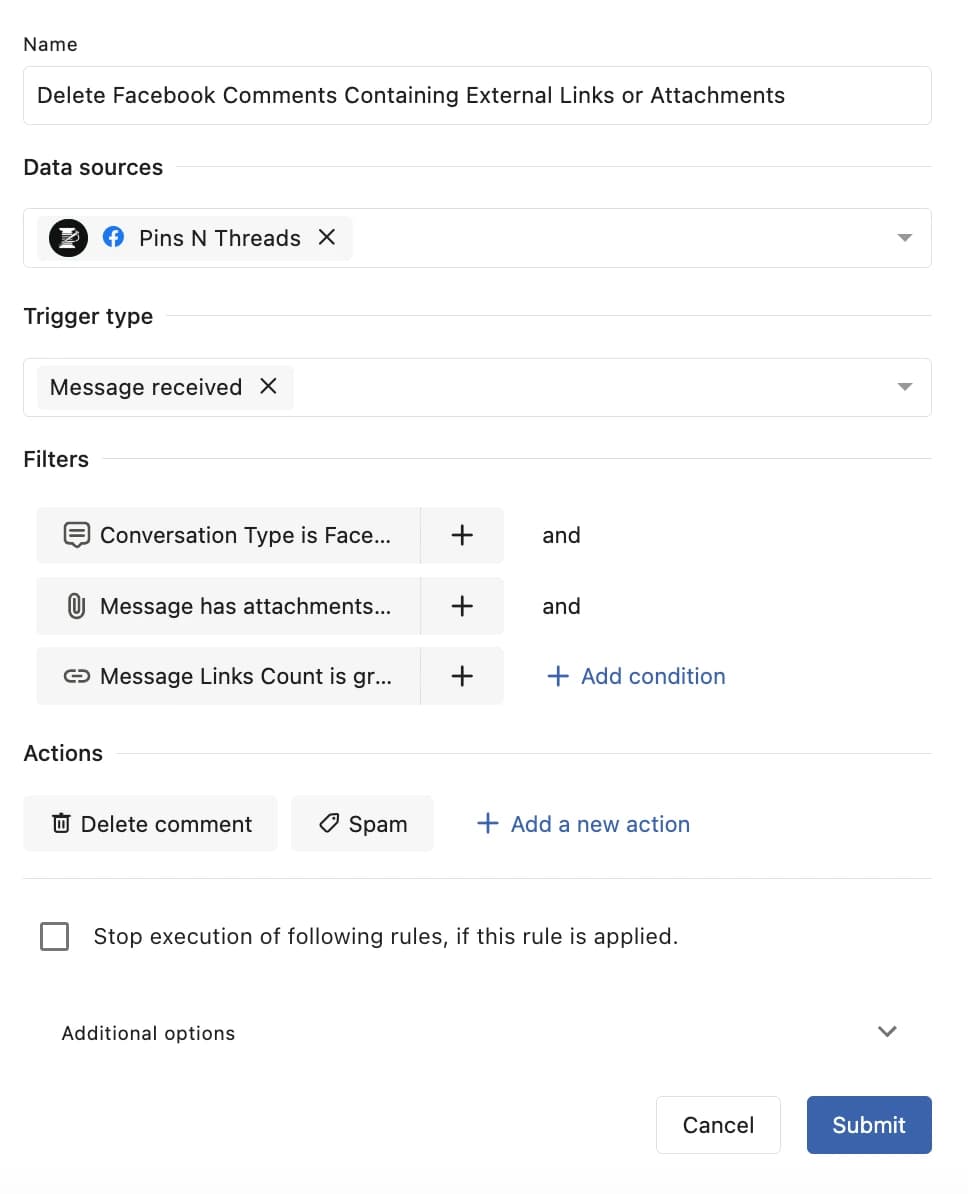
Automation to delete spam Facebook comments that either contain an attachment or links
Encourage positive and constructive conversations
Create an environment where people feel comfortable participating. That starts with how you speak and interact. Use a friendly, empathetic tone that sets expectations for respectful dialogue.
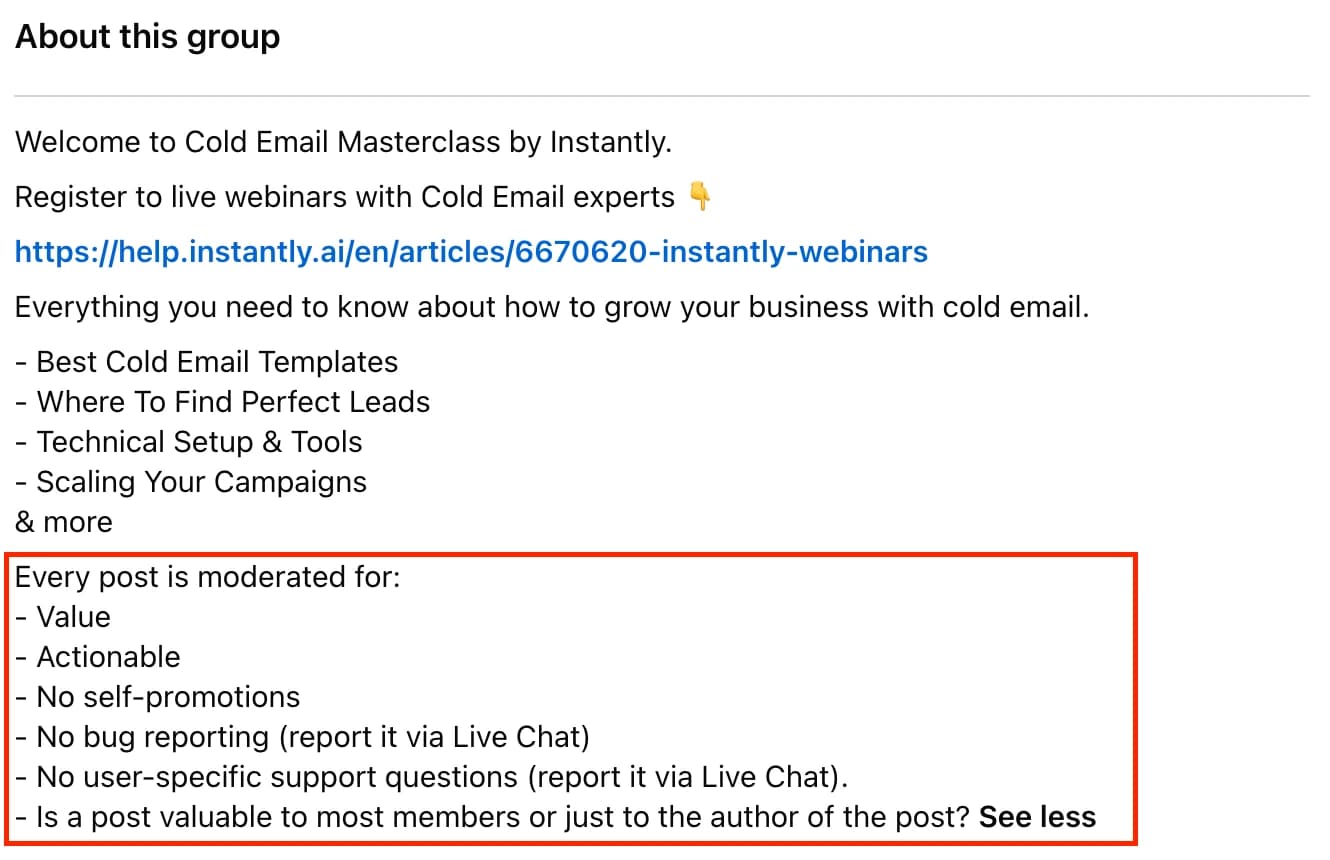
Example of Community Guidelines (Source)
Ask open-ended questions to spark discussion and invite different viewpoints. For example, “What’s been your biggest challenge with this?” or “How do you approach it?”
Create and enforce community guidelines that clearly outline what types of behavior are welcome and what constitutes unacceptable behavior within the community.
Create and share engaging, emotion-evoking content
People are more likely to engage with content that evokes an emotional response, such as joy, curiosity, inspiration, or nostalgia.
Use storytelling, relatable scenarios, or behind-the-scenes moments in your content that humanize your brand and invite empathy.
Short videos, real customer stories, and user-generated content (UGC) help form emotional connections.
Ask your audience to share their own stories, ideas, or opinions.
Use polls, quizzes, or question boxes (especially on formats like Instagram Stories) to make interactions lightweight while still sparking emotional engagement.
Rotate between content formats to avoid fatigue.
Track which posts get the strongest reactions or start thoughtful comment threads. Let that guide future content planning.
Respond to Questions and Provide Support
Responding to questions promptly and thoroughly builds confidence in your brand and shows that your social channels are not just promotional spaces but active, responsive support hubs.
Use a structured workflow to assign questions to the right person on your team, especially if they involve customer service or product details.
Tools like Statusbrew can help route inquiries to the right team member, thereby managing response time.
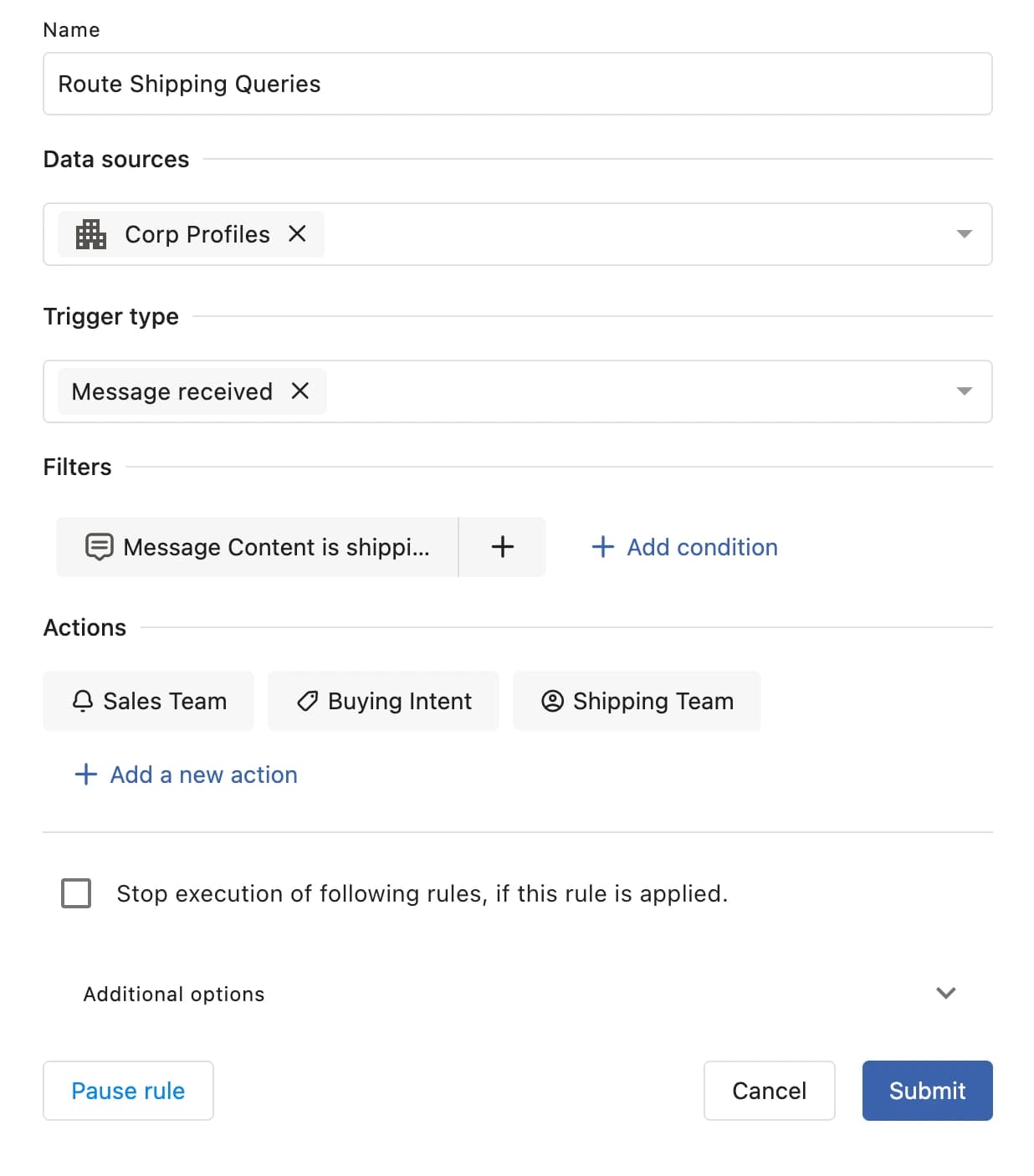
Automation to route shipping inquiries
When replying, be clear, friendly, and specific.
Even if the question has been asked before, take the time to respond as if it’s the first time you’ve seen it.
If it’s something you can’t solve publicly, direct the user to a DM, but always acknowledge their concern in the original thread so others know you’re paying attention.
Statusbrew’s Macros lets you store and reuse responses to common queries to help your team reply faster while maintaining consistency in tone and information.
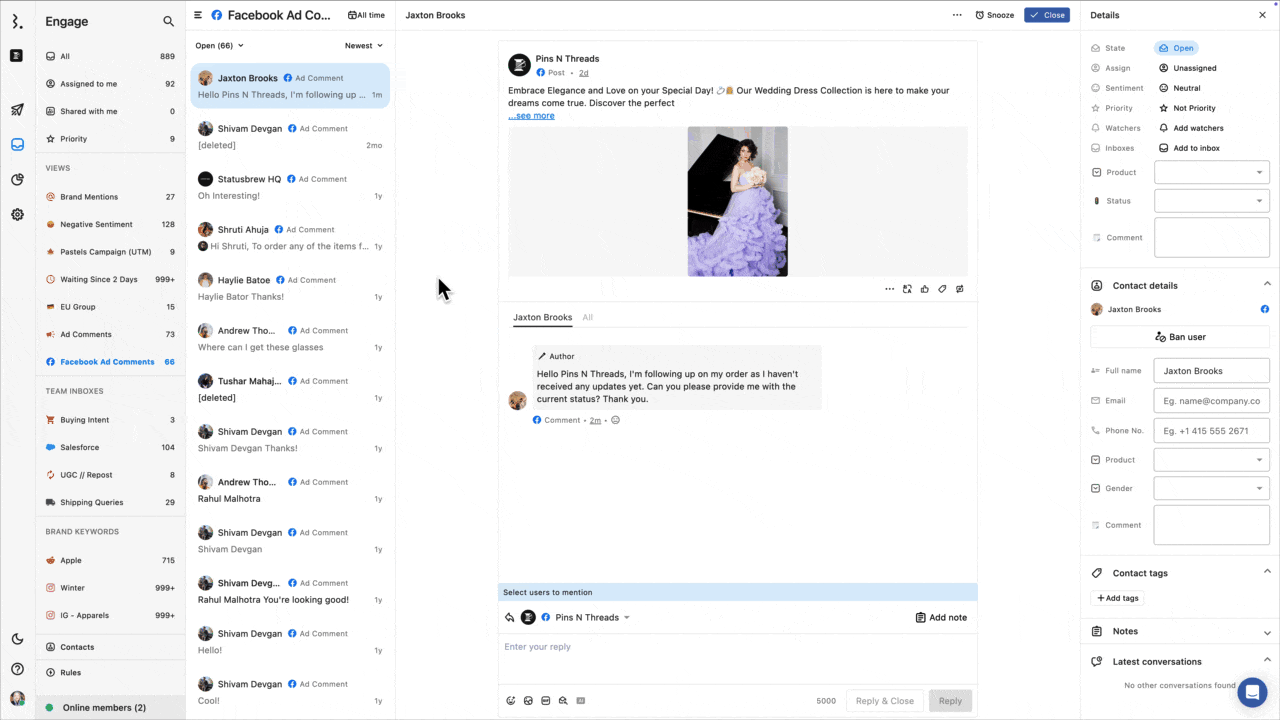
Use User-Generated Content to Build Authenticity
User-generated content (UGC) is one of the most trustworthy forms of brand communication because it’s created by real people, not marketing teams.

To encourage UGC, invite followers to share their experiences with a branded hashtag or through a content request.
You can feature UGC in your Stories, feed posts, or even your website (just ensure you ask for permission or follow platform-specific rules around sharing user content).
Acknowledging community contributions, like reposting a customer photo with a thank-you, creates a sense of belonging.
It signals to others that their voice matters and that participating leads to recognition.
This approach not only builds trust but also reduces the demand on your content production team.
How to Grow Your Community?
Once your community is up and running, the next step is growth, but not just in numbers.
You want to bring in the right people: those who are genuinely interested, likely to participate, and aligned with your brand’s values.
This section looks at ways to grow your community with purpose.
Organize Events like Webinars, Q&As, Contests, and Themed Discussions
Events help bring your community together and give people a reason to participate in community discussions.
Hosting events like live Q&As, webinars, or panel discussions makes space for real-time conversation. These events also show that you’re open to listening and answering questions directly.
Contests are another great way to spark activity. A trivia quiz or comment-to-win giveaway encourages people to share content and invite others to join.

Themed discussions, such as a “Monday Motivation” thread or a weekly tip post, help people know when to engage.
Conducting regular events gives your community members a purpose to look forward to, and they help your brand feel more present.
Posting a calendar or reminder helps keep members in the loop about upcoming events.
Collaborate with Influencers and Active Members for Community Initiatives
Working with people who already have a connection with your audience will help your community grow faster.

Influencers bring new eyes to your content, but the key is choosing ones who share your values and speak in a way that feels real, not overly polished or salesy.
At the same time, don’t overlook the people already in your community. Some of your most loyal followers may not have huge followings, but they understand your brand and care about it.
Invite them to co-host a live session. Giving active members a role shows that you value their input and presence within the community.
These collaborations build trust, create new content, and help new members feel welcomed by seeing familiar faces involved. Just be clear about the goals and keep communication open throughout.
Use regular updates and announcements to maintain interest
Keeping your audience in the loop helps them feel involved.
Share updates about new features, upcoming events, or important changes. Use announcements to highlight milestones or major moments.
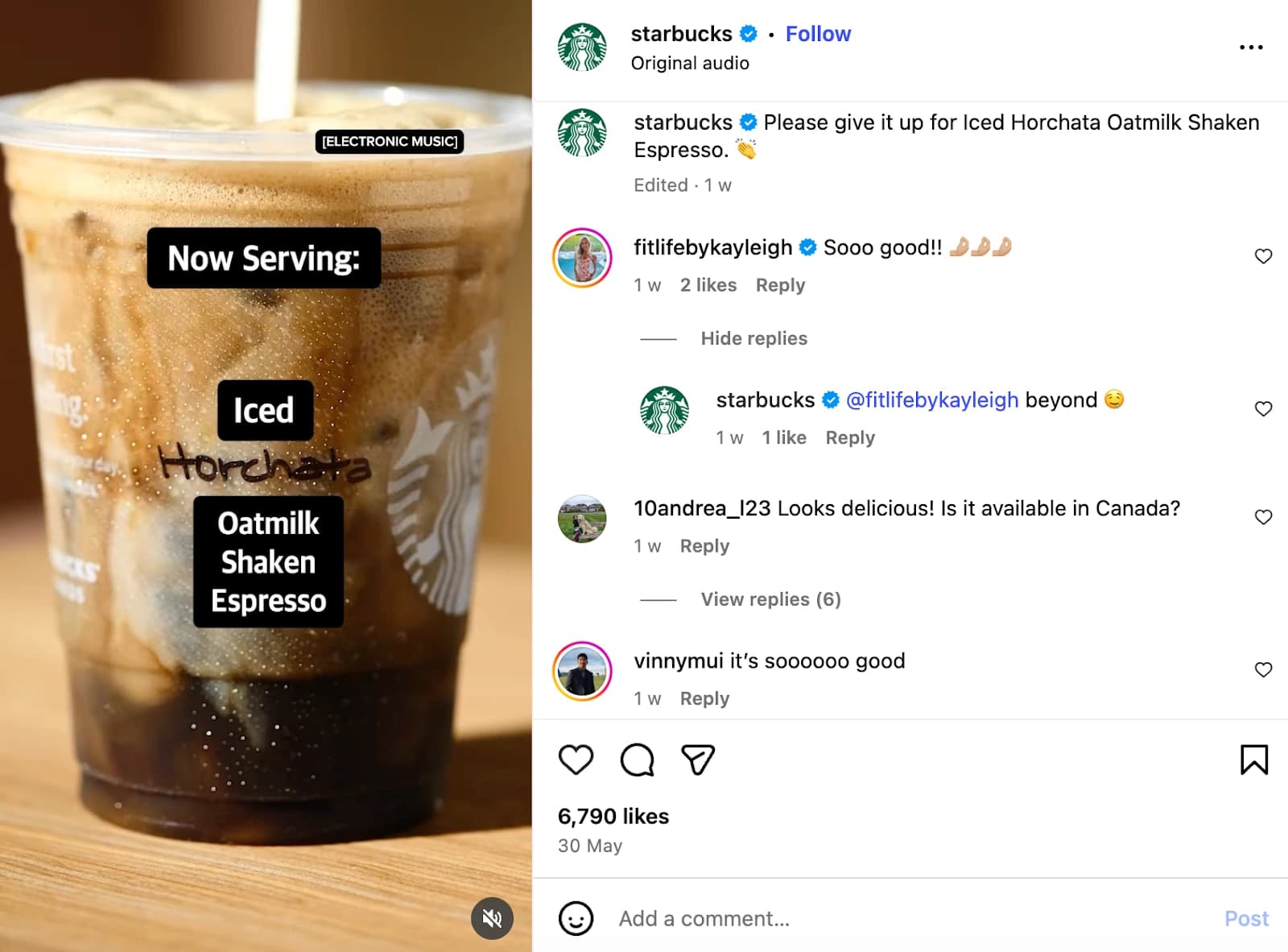
Pinning these posts or including them in your bio to make sure they stay visible.
These updates remind your followers that your community is active and worth staying part of.
Encourage members to invite peers and share content
Sometimes the best way to grow your community is through the people already in it.
Ask your community members to tag their friends, share your posts with them, or spread the word about events.
You can make this easier by creating content that’s fun, helpful, or meaningful enough that people naturally want to share it.
You can also thank those who invite others or share your content. It will show appreciation and encourage more people to do the same.
Growth through existing members often brings in like-minded people who are more likely to stick around.
Tools for Social Media Community Management
As your social media communities grow, managing them manually becomes harder. That’s where the below given community management tools will help you stay on top of community interactions.
Statusbrew
Statusbrew is a unified social media engagement & community management tool that offers the fastest inbox experience.
Statusbrew is trusted by over 5,000 teams, including those from Ford, Shopify, H&M, and Hilton, for managing high-volume engagement.
Centralized Inbox for Smarter Engagement
Statusbrew’s core strength is its unified inbox, which consolidates all types of conversations from 14 social networks, messaging apps, and review platforms.
Messages can be automatically categorized and prioritized based on your preferences to help you focus on what's urgent.
Filters such as sentiment, keywords, customer type, and campaign tags give you precision control over how conversations are displayed and handled.
Automation and Moderation Tools
To reduce manual effort, Statusbrew offers over 68 automations that automate repetitive tasks.
You can set rules to auto-hide Facebook and Instagram comments, flag and remove toxic or inappropriate language, and route messages to specific team members.
Macros in Statusbrew help teams send pre-approved responses and apply standardized actions with a single click.
Conditions can be based on comment content, type, customer history, and more, which makes it suitable for both small teams and enterprise workflows.
AI Assistance for Faster, Smarter Replies
Statusbrew integrates AI features that assist with replying to messages more efficiently.
It provides instant conversation summaries, sentiment detection with intensity scoring, and automatic translations in up to 10 languages.
You can also use it to rephrase, expand, or correct replies to align with your brand's tone.
Analytics and Team Reporting
With over 250 metrics, Statusbrew offers detailed analytics that help teams track performance across channels.
You can analyze individual and team response metrics, customer satisfaction trends, and engagement levels.
Statusbrew supports historical data backfill for up to 12 months for a smooth migration without losing past performance data.
Book a free demo to explore the platform in action and see how Statusbrew can simplify your social engagement and community management.
Sprout Social
Sprout Social’s Smart Inbox unifies messages, mentions, comments, and DMs from multiple platforms to make it easier for teams to monitor and respond without switching tabs.

Sprout’s AI Assist features offer real-time recommendations to improve message tone and build more complete responses.
You can assign messages to specific team members. Sprout offers smart automation to route conversations to the appropriate team members.
Tags and filters let teams prioritize urgent conversations. Saved replies speed up responses to common queries.
Sprout also offers automated moderation tools for managing ad comments. You can hide or delete spam, harmful content, or inappropriate language based on pre-set rules.
Sprout provides analytics dashboards to measure response times, sentiment trends, and audience engagement.
With Sprout Social Listening, brands can monitor keywords, hashtags, and industry terms.
While Sprout offers a comprehensive set of tools for managing social media communities, it comes at a premium.
Pricing starts at $199 per user per month, with essential community management features like message tagging, AI Assist, and team reporting available only in higher-tier plans starting at $299/$399 per user per month.
If you’re interested in a detailed pricing breakdown, refer to our blog on Sprout Social pricing. And if you're exploring alternatives that offer similar features at different price points, I suggest you check out our guide to Sprout Social alternatives.
Hootsuite
Hootsuite consolidates comments and messages across streams into a single dashboard.

Streams are a column-based layout that some users find hard to navigate and less visually friendly.
Teams can assign conversations, mark them as resolved, and add internal notes.
With saved replies, teams can maintain a consistent brand voice while replying faster to common questions.
Hootsuite also supports automated message tagging to help users categorize and route conversations based on topic or urgency.
Hootsuite offers advanced social listening capabilities powered by Talkwalker, a result of its 2024 acquisition.
Community managers can monitor key brand mentions and keywords to stay informed about how people are discussing the brand, competitors, or related topics, even if the brand isn’t tagged.
It also offers analytics to track metrics like engagement rate, response time, and audience sentiment.
While Hootsuite’s starting price of $149 per user per month may seem affordable, costs can climb quickly as teams add users or require advanced features.
Its pricing model is heavily dependent on add-ons, which can make budgeting difficult, especially for smaller organizations trying to manage costs.
Users on lower-tier plans don’t get access to the full feature set. For example, standard community management features, such as saved replies and inbox reporting, are restricted to the Advanced plan starting at $399 per user per month.
Thinking about opting for Hootsuite or not fully satisfied with what you're getting?
Our blog on Hootsuite’s Pricing outlines what each plan includes and doesn’t. We also break down top Hootsuite alternatives to help you decide which tool better fits your workflow and budget.
👉 Interested in both Sprout Social and Hootsuite? You can also check out our detailed comparison to see which one aligns better with your needs.
Agorapulse
Agorapulse Social Inbox brings together all your organic and paid post comments, mentions, private messages, and reviews across key networks like Facebook, Instagram, LinkedIn, X (Twitter), YouTube, Google, and TikTok.
However, it’s important to note that Agorapulse’s inbox is profile-based, not fully unified.
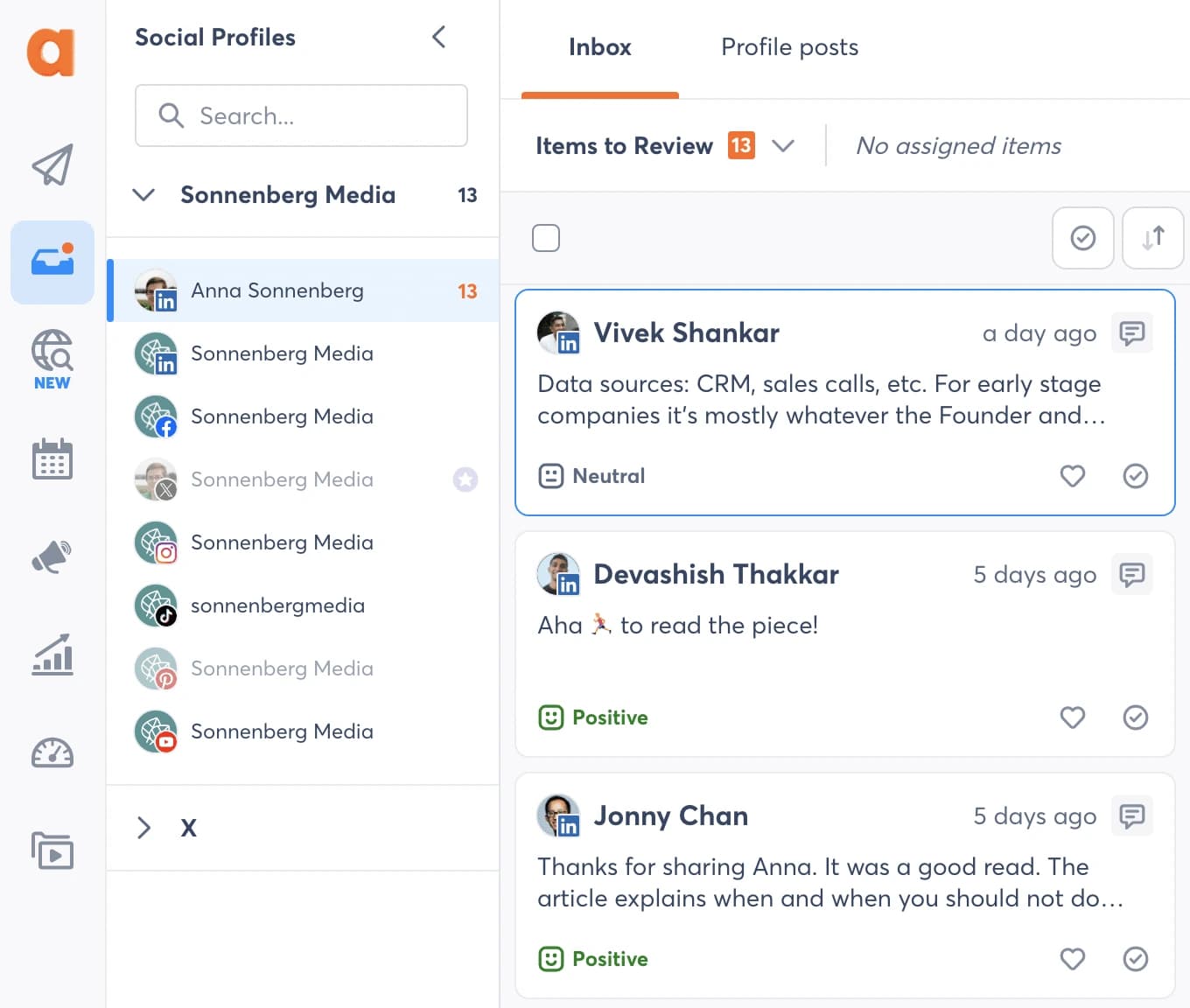
With features like the Inbox Assistant, you can automate sorting, labeling, and prioritizing incoming messages.
Conversations can be assigned to specific team members, labeled to track themes or issues, and bookmarked for easy reference. Saved Replies let you respond quickly and consistently to common questions.
Agorapulse supports UTM tracking so you can directly connect social conversations to business results, like leads, traffic, or sales.
Built-in analytics give you a clear view of team performance, sentiment trends, and campaign performance.
AI-powered Reply Suggestions help you personalize responses based on past interactions
Agorapulse’s pricing is based on a per-user model, starting at $99 per user per month.
But important community management features such as saved replies, bulk actions, and labeling are available only with the Advanced plan, which begins at $199 per user per month.
If Agorapulse’s profile-based inboxes feel limiting for your needs and you’re considering other options, check out our blog on Agorapulse alternatives for a closer look at different tools.
Conclusion
Remember that a successful community balances business goals with member expectations. Stay focused, but adaptable.
Ensure that every interaction with your community members feels personal, and always consider the long-term value of mutual respect and trust.
Building a community takes effort, but with a clear plan and genuine engagement, it becomes a sustainable extension of your brand.
FAQs
Is social media community management purely about support or also content publishing?
It includes both. While the actual publishing of content might fall under a separate role (like a content manager), community managers are closely involved to ensure posts support engagement goals and community tone.
What is community management, and how is it different from customer support?
Community management is a proactive effort that focuses on building and maintaining relationships with a brand’s audience. Customer support, in contrast, is reactive and focuses on solving specific customer issues.
Which tools are commonly used by community managers?
Big brands/agencies use social media management tools like Statusbrew, Sprout Social, or Hootsuite for community management.
How do agency community managers handle multiple brands?
Agency-based community managers rely on organized workflows, clear brand guidelines, and automation tools to manage engagement across multiple clients and platforms.
How can I identify and reward my superfans effectively?
You can identify superfans by tracking users who consistently engage with your content, mention your brand, create user-generated content, and positively interact with other members of your community.
What are the key responsibilities of a community manager?
A community manager is responsible for engaging with followers, responding to comments and messages, moderating content, and maintaining a positive and respectful environment within the community.
What is the difference between a community manager and a social media manager?
A community manager focuses on building relationships with followers by engaging in conversations, moderating discussions, and building and growing the community. In contrast, a social media manager is primarily responsible for strategizing, executing, and managing social media campaigns and analyzing performance metrics to improve campaign performance.
What are the most common challenges faced in community management?
Community managers often face challenges such as handling large volumes of messages and comments, dealing with negative feedback, and keeping communication consistent across platforms.
